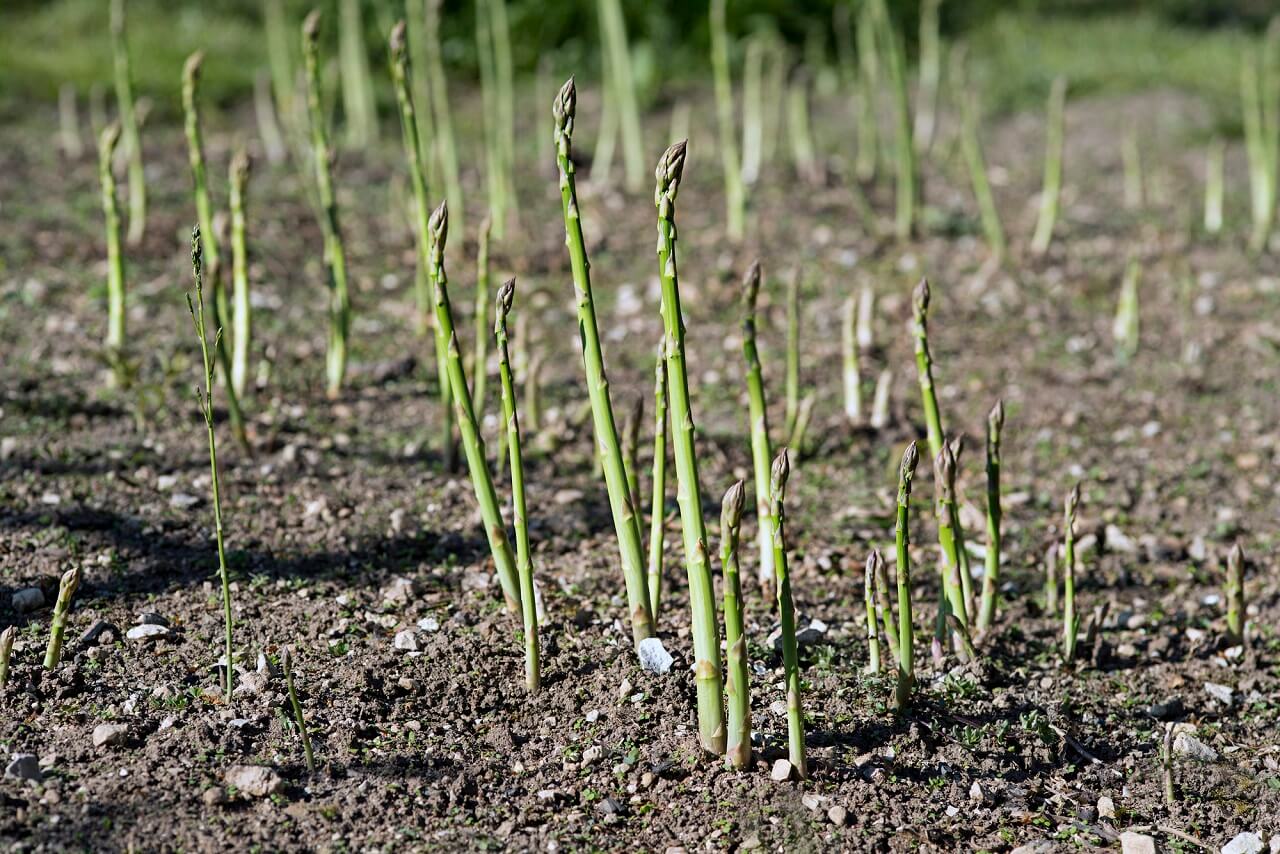Like all plants and vegetable crops, asparagus needs to be trimmed back once in a while, to give it the best chance of producing you some fine crops. If you are new at growing asparagus then you may not know how to cut back asparagus for the best results – we are here to tell you the best ways.
What You'll Learn Today
Should Asparagus Plants Be Cut Back?

Asparagus plants should definitely be cut back. Even during their first year, when you should expect no harvest, you will still need to trim the plants back.
There is some debate as to whether the leafy foliage should be trimmed back in the first year, but generally it is agreed that this makes the plant perform better.
- When you first plant your crowns, they will sprout green fronds that should be cut back at the first winter, to allow the plant to conserve its energy for the following year.
- After the first year, repeat the process for the second, then during the third year you can start to harvest your first spears.
- You should take every single spear, even the tiny ones, because if you leave them then you may get an invasion of Asparagus Beetle, and nobody wants that!
Cutting back your asparagus plants well, in the way that encourages new growth, is the best way to generate a beautiful bed of asparagus.
When To Cut Back Asparagus?
Asparagus needs to be well and truly left alone for the first two years of its life, to allow it time to grow to its full potential.
Aside from harvesting, you shouldn’t actually have to cut your asparagus plant back, unless it starts to not produce as well as it did, or if it becomes old.
If you are cutting it to harvest, simply cut off the individual shoots, using a sharp knife, in mid April.
If you are wanting to cut it right back, or divide the crowns, then this process is slightly different:
- Divide the crowns in late winter or early spring, for the best results.
- Take the strongest growth that you can find, and remove any woody parts.
- Dig up the entire root, then divide it into pieces – you may need a sharp knife if you cannot pull them apart with your hands.
- Handling the roots very carefully, replant them into quality, well draining compost.
- Replant the crowns immediately, ensuring that the buds are still visible at the surface of the soil.
This article explains in more detail the best way to divide your asparagus crowns.
How Short To Cut Back Asparagus The First Year?
In its first year of growth you will not be able to harvest any asparagus spears from your plants, but there is still some maintenance to be done.
When the ferny foliage starts to yellow and die back, you should trim it right back to an inch above the ground.
The cut back plant will then need to be covered with a layer of mulch, to protect the plants and give them some nutrients.
In the following years you won’t have to cut your asparagus back so harshly, but in the initial stages it will do it the world of good.
How Do You Cut Asparagus For Regrowth?

Basically, every time you cut your asparagus back you are encouraging it to regrow. This is a very forgiving plant, which responds well to being cut back.
If you were to never cut back your asparagus spears the plant would revert to its wild state, and may be affected by beetles and other insects.
Cutting back the spears regularly in the growing season will ensure that more of the grow back the following year.
If you cut your asparagus back effectively, it will reward you with excellent growth, year after year!
How To Cut Back Asparagus For Winter?
Keep an eye on the foliage of your asparagus plant. When this starts to yellow and die back, this is a sign that it is ready to be trimmed back.
Cutting back the foliage will prevent the plant wasting energy in the fronds, and should allow it to produce some really good, strong shoots the following year.
- When the foliage yellows, cut the stems back to about 1 inch above the soil, and mulch the crowns well.
- Mulching the crowns will protect the against winter frosts, and should help to keep them warm as well as adding a burst of nutrients into the soil.
- If you do not remove the foliage in the winter, you should definitely cut it back in late March or early April, to allow the new growth.
- After you have cut the plants back, you should hold off on watering them, as the cold time of year will probably give them all the moisture they need.
For a more visual guide on how to cut asparagus down for the winter, here is a little rough n’ ready video that should help you:
Once you have learned how to cut back asparagus effectively so that you make the most of the crop and the plant itself, you can join the ranks of self satisfied gardeners, and enjoy the envy of all your fellow allotmenteers!